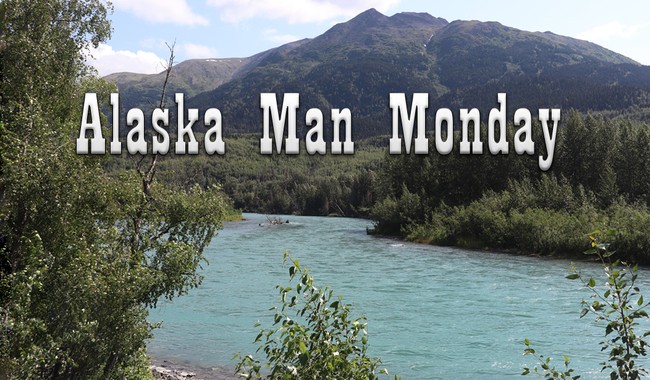
This time of year, it’s all about harvests, whether it be veggies or fish, and here in the Great Land this week, we have a little bit of news about both – and in our usual Alaskan style. So buckle up, because before we get to harvests, we’ve got something stringy to share.
The Yup’ik are a native group related to the Inuit and Iñupiat. They are found all across Alaska as well as in the eastern reaches of Siberia. They are an ancient people with a fascinating heritage. Matthew Nicolai, a member of the Yup’ik community, is keeping alive a fascinating old custom: the old tradition of telling stories with a loop of string.
Stories can be told in many different ways: through oral histories, in writing, through photos, and even on the radio. But they can also be told with string, and that’s what Matthew Nicolai does best. He’s a storyteller from Kwethluk, and he can spin a good yarn with his fingers and a loop of string.
“I started watching at age five. And my mom, my grandpa, they were very patient at teaching me,” Nicolai said.
Nicolai said that it’s a tradition that’s not only limited to the Yup’ik people.
“It’s all over the state that I’ve seen, where the more outer, away from the hub areas, that culture is still alive. Very few people still know these,” he said.
Now, that’s what I call a good yarn. I do like seeing traditions like this kept up. We forget our past at our peril, and America, being as vast a land as it is, has a lot of these fun little traditions to keep up. Kudos to Matthew Nicolai for doing just that.
See Related: Cherokee Nation Calls on Congress to Reform ‘Indian Blood’ Requirement for Black Tribal Citizens
Alaska Man Score: 5 moose nuggets. We should preserve old traditions like this. We can’t know where we are going without knowing where we’ve been.
A lot of people may not know this, but Alaska is known for massive pumpkins, squash, and root veggies. It has a lot to do with the fact that, while our growing season is short, we make up for it with long, long days – many hours of sunlight to drive growth. The result can be, as an example, pumpkins that weigh over a ton.
Dale Marshall of Anchorage continued his streak of giant pumpkin-growing supremacy at the Alaska State Fair’s weigh-off on Monday in Palmer, taking first place with a pumpkin that clocked in at 2,035 pounds.
In a contest with only two entrants, Marshall once again rose to the top with his Atlantic giant. Second place went to 5-year-old Silas Dinkel of Wasilla and his 734-pound pumpkin. The Dinkel family is known for producing giant cabbages that have appeared in another of the fair’s weigh-off events.
The seed for Marshall’s pumpkin this year is from his first-place entry in 2023. He said there’s also an online network of growers who trade back and forth that he can utilize.
“So if somebody someplace is growing a particular pumpkin I like, I’ll reach out to them, see if I can get a couple seeds off them,” he said.
My only question about this kind of competition is palatability. Are these giant vegetables as good to eat? We buy a lot of local produce from neighbors who run a produce stand and from our local farmer’s market, but all of these are distinctly normal in size. I wonder about a difference in flavor with the giants.
See Related: MAGA: California Farmer Plows One-Mile Wide TRUMP Sign in Safflower Field
Alaska Man Score: 5 moose nuggets for Mr. Marshall. Good job! That’s one heck of a punkin.
Something is fishy with this story, but at least it has an ending that, while maybe not happy, is at least just.
In a twist to a lost fish saga, Alaska Airlines says it will replace almost 2,000 pounds of halibut that vanished and was eventually found spoiled.
In an email, Vic Scaravilli wrote that the group he was fishing with was called by Marilyn Romano, who is the regional vice president of Alaska Airlines, who apologized to him for “their errors in handling the fish.”
“She said that each one of us in our party would receive a replacement box of halibut for our lost fish,” Scaravilli wrote in an email.
We are pretty fortunate in Alaska when it comes to halibut. At the store, the stuff costs upwards of $35 a pound, but if you have a connection that can get you out into Cook Inlet or the Gulf of Alaska at the right time, you can bring in a healthy supply of flatfish for the freezer. Halibut is delicious, a clean white fish that goes well with almost anything. It’s good that Alaska Airlines is making good these folk’s loss.
At least this time there weren’t any doors breaking off the airplane.
See Related: Plane That Lost Door Plug in Flight Had 3 Prior Depressurization Alerts; Alaska Airlines Kept It Flying
Alaska Man Score: 3.5 of 5 moose nuggets. Good on Alaska Airlines for making good the loss in kind; demerits for screwing it up in the first place.
Now, then, see another reason why you don’t have to be a little bit crazy to live in Alaska, but it sure doesn’t hurt.

